Modelling Inductive Sensors for Arc Fault Detection in Aviation
Abstract
:1. Introduction
1.1. Series Arc Detection Techniques and Sensors
1.1.1. Optical Methods—Light Monitoring
1.1.2. Acoustical Methods—Noise Monitoring
1.1.3. Electrical Methods—Impedance Monitoring
1.1.4. Electrical Methods—Current Monitoring through Magnetic Field Sensors
1.2. Proposed Approach and Background
2. Inductive Sensor Modelling
2.1. Overview
2.2. Theoretical Approach
2.2.1. Inductance of a Single Rectangular Coil
2.2.2. Sensor #1 Theoretical Self-Inductance
2.2.3. Sensor#2 Theoretical Self-Inductance
2.2.4. Sensor#3 Theoretical Self-Inductance
2.2.5. Theoretical Mutual Inductance between Sensor and Main Conductor
2.2.6. Theoretical Frequency Response of the Proposed Sensors
2.3. FEM Analysis
3. Experimental Study of the Proposed Sensors
3.1. Transfer Function Experimental Measurement
3.2. Experimental Detection of Series Arcs with the Sensor Prototypes
4. Conclusions
Author Contributions
Funding
Institutional Review Board Statement
Informed Consent Statement
Data Availability Statement
Acknowledgments
Conflicts of Interest
Abbreviations
| AC | Alternating Current |
| AEA | All-Electric Aircraft |
| AFCB | Arc Fault Circuit Breaker |
| DC | Direct Current |
| FEM | Finite Elements Methods |
| HF | High Frequency |
| HFCT | High-Frequency Current Transformer |
| HVDC | High-Voltage Direct Current |
| MDPI | Multidisciplinary Digital Publishing Institute |
| MEA | More-Electric Aircraft |
| PLA | Polylactic Acid |
| VDC | Voltage Direct Current |
| VHF | Very High-Frequency |
References
- Sarlioglu, B.; Morris, C.T. More electric aircraft: Review, challenges, and opportunities for commercial transport aircraft. IEEE Trans. Transp. Electrif. 2015, 1, 54–64. [Google Scholar] [CrossRef]
- Bowman, C.L.; Felder, J.L.; Marien, T.V. Turbo-and Hybrid-Electrified Aircraft Propulsion for Commercial Transport. In Proceedings of the 2018 AIAA/IEEE Electric Aircraft Technologies Symposium (EATS), Cincinnati, OH, USA, 12–14 July 2018. [Google Scholar]
- Cano, T.C.; Castro, I.; Rodríguez, A.; Lamar, D.G.; Khalil, Y.F.; Albiol-Tendillo, L.; Kshirsagar, P. Future of electrical aircraft energy power systems: An architecture review. IEEE Trans. Transp. Electrif. 2021, 7, 1915–1929. [Google Scholar] [CrossRef]
- Chen, J.; Wang, C.; Chen, J. Investigation on the selection of electric power system architecture for future more electric aircraft. IEEE Trans. Transp. Electrif. 2018, 4, 563–576. [Google Scholar] [CrossRef]
- Thomson, R.; Sachdeva, N.; Nazukin, M.; Martinez, N. Aircraft electrical propulsion–the next chapter of aviation? In Think Act; Roland Berger Ltd.: London, UK, 2017; pp. 1–32. [Google Scholar]
- Galli, G.; Hamrita, H.; Jammes, C.; Kirkpatrick, M.J.; Odic, E.; Dessante, P.; Molinié, P. Paschen’s law in extreme pressure and temperature conditions. IEEE Trans. Plasma Sci. 2019, 47, 1641–1647. [Google Scholar] [CrossRef]
- Landfried, R.; Savi, L.; Leblanc, T.; Teste, P. Parametric study of electric arcs in aeronautical condition of pressure. Eur. Phys. J.-Appl. Phys. 2014, 67, 20802. [Google Scholar] [CrossRef]
- Mellit, A.; Tina, G.M.; Kalogirou, S.A. Fault detection and diagnosis methods for photovoltaic systems: A review. Renew. Sustain. Energy Rev. 2018, 91, 1–17. [Google Scholar] [CrossRef]
- Lu, S.; Phung, B.; Zhang, D. A comprehensive review on DC arc faults and their diagnosis methods in photovoltaic systems. Renew. Sustain. Energy Rev. 2018, 89, 88–98. [Google Scholar] [CrossRef]
- Andrea, J.; Buffo, M.; Guillard, E.; Landfried, R.; Boukadoum, R.; Teste, P. Arcing fault in aircraft distribution network. In Proceedings of the 2017 IEEE Holm Conference on Electrical Contacts, Denver, CO, USA, 10–13 September 2017; pp. 317–324. [Google Scholar]
- Liu, Y.; Yang, G.; Wang, H. Series Arc Fault Detection under Vibration Condition Based on NMMB. Sensors 2024, 24, 959. [Google Scholar] [CrossRef] [PubMed]
- Riba, J.R.; Gómez-Pau, Á.; Moreno-Eguilaz, M.; Bogarra, S. Arc tracking control in insulation systems for aeronautic applications: Challenges, opportunities, and research needs. Sensors 2020, 20, 1654. [Google Scholar] [CrossRef]
- Bao, G.H.; Shi, L.; Yan, Z.J.; Niu, K.X. The Design of Aircraft Wiring Harness Detection System Based on Wireless Network Communication. In Proceedings of the 2016 International Conference on Information System and Artificial Intelligence (ISAI), Hong Kong, China, 24–26 June 2016; pp. 543–546. [Google Scholar]
- Lectromec. 2016 Statistical Analysis of EWIS Failures of the U.S. Commercial Aircraft Fleet and How to Improve; Lectromec: Chantilly, VA, USA, 2016. [Google Scholar]
- Hu, X. Research on Electrical Wiring Design and Verification of Civil Aircraft. In Proceedings of the 2022 2nd International Conference on Electrical Engineering and Control Science (IC2ECS), Nanjing, China, 16–18 December 2022; pp. 96–100. [Google Scholar]
- Brusso, B.C. History of aircraft wiring arc-fault protection [history]. IEEE Ind. Appl. Mag. 2017, 23, 6–11. [Google Scholar] [CrossRef]
- Boukadoum, R.; Landfried, R.; Leblanc, T.; Testé, P.; Andrea, J. Role of the pressure in the DC electric arc characteristics application: Case of the more electrical aircraft. In Proceedings of the 28th International Conference on Electrical Contact, Giza, Egypt, 7–20 December 2016; pp. 153–158. [Google Scholar]
- Maqsood, A.; Oslebo, D.; Corzine, K.; Parsa, L.; Ma, Y. STFT cluster analysis for DC pulsed load monitoring and fault detection on naval shipboard power systems. IEEE Trans. Transp. Electrif. 2020, 6, 821–831. [Google Scholar] [CrossRef]
- André, T.; Valensi, F.; Teulet, P.; Cressault, Y.; Zink, T.; Caussé, R. Arc tracking energy balance for copper and aluminum aeronautic cables. J. Phys. Conf. Ser. 2017, 825, 012001. [Google Scholar] [CrossRef]
- Chu, R.; Schweitzer, P.; Zhang, R. Series AC arc fault detection method based on high-frequency coupling sensor and convolution neural network. Sensors 2020, 20, 4910. [Google Scholar] [CrossRef] [PubMed]
- Shea, J.; Carrodus, J.B. RF current produced from electrical arcing. In Proceedings of the 2011 IEEE 57th Holm Conference on Electrical Contacts (Holm), Minneapolis, MN, USA, 11–14 September 2011; pp. 1–9. [Google Scholar]
- Awramiuk, P.; Sadowska, K.; Wiater, J.; Sajewicz, D.; Kochanowicz, M.; Walendziuk, W.; Żmojda, J.M. Development of an Active Optical Lens for Arc Flashing Detection. Sensors 2023, 23, 2629. [Google Scholar] [CrossRef] [PubMed]
- King, R.; Stan, N.; Seng, F.; Shumway, L.; Selfridge, R.; Schultz, S. Measuring arc dynamics using a slab coupled optical sensor (SCOS). In Proceedings of the 2015 IEEE 58th International Midwest Symposium on Circuits and Systems (MWSCAS), Fort Collins, CO, USA, 2–5 August 2015; pp. 1–4. [Google Scholar]
- Szolga, L.; Galatus, R.; Oltean, G. Fluorescent optical fiber sensor for arcing and flame monitoring in electrical distribution boards. In Proceedings of the 2018 IEEE International Instrumentation and Measurement Technology Conference (I2MTC), Houston, TX, USA, 14–17 May 2018; pp. 1–5. [Google Scholar] [CrossRef]
- Zhao, L.; Zhou, Y.; Chen, K.L.; Rau, S.H.; Lee, W.J. High-Speed Arcing Fault Detection: Using the Light Spectrum. IEEE Ind. Appl. Mag. 2020, 26, 29–36. [Google Scholar] [CrossRef]
- Zhu, C.; Yang, D. A real-time arc acoustic detection and early warning system for civil Aircraft Power Panel Box fault arc. In Proceedings of the 2022 2nd International Conference on Electrical Engineering and Control Science (IC2ECS), Nanjing, China, 16–18 December 2022; pp. 700–704. [Google Scholar] [CrossRef]
- Drost, B.; Thompson, B.; Mastrianni, M. Aircraft Wire Fault Detection and Isolation using Spread Spectrum Time Domain Reflectometry. In Proceedings of the AHS International Forum, Montreal, QC, Canada, 20–22 May 2014; Volume 70. [Google Scholar]
- Calle, M.G.d.l.; María, G.d.; Izquierdo, D.; Martín, R.; Martínez-Tarifa, J.M.; Robles, G. Towards Series Arc Fault Detection in More Electrical Aircrafts. In Proceedings of the 2020 IEEE 3rd International Conference on Dielectrics (ICD), Valencia, Spain, 5–31 July 2020; pp. 866–869. [Google Scholar] [CrossRef]
- Shaffer, B.; Abullah, Y.; Wang, J.; Arfaei, B.; Emrani, A.; Volpone, M. On-line detection of DC arc faults using hurst exponents for hybrid-electric vehicles. In Proceedings of the 2020 IEEE Energy Conversion Congress and Exposition (ECCE), Detroit, MI, USA, 11–15 October 2020; pp. 6372–6378. [Google Scholar]
- Kim, J.; Kwak, S. Detection and identification technique for series and parallel DC arc faults. IEEE Access 2022, 10, 60474–60485. [Google Scholar] [CrossRef]
- Li, K.; Zhao, S.; Wang, Y. A planar location method for DC arc faults using dual radiation detection points and DANN. IEEE Trans. Instrum. Meas. 2020, 69, 5478–5487. [Google Scholar] [CrossRef]
- Jiang, R.; Bao, G.; Hong, Q.; Booth, C.D. A coupling method for identifying arc faults based on short-observation-window SVDR. IEEE Trans. Instrum. Meas. 2021, 70, 3513810. [Google Scholar] [CrossRef]
- Xiong, Q.; Feng, X.; Gattozzi, A.L.; Liu, X.; Zheng, L.; Zhu, L.; Ji, S.; Hebner, R.E. Series arc fault detection and localization in DC distribution system. IEEE Trans. Instrum. Meas. 2019, 69, 122–134. [Google Scholar] [CrossRef]
- Chen, S.; Wu, H.; Meng, Y.; Wang, Y.; Li, X.; Zhang, C. Reliable Detection Method of Variable Series Arc Fault in Building Integrated Photovoltaic Systems Based on Nonstationary Time Series Analysis. IEEE Sens. J. 2023, 23, 8654–8664. [Google Scholar] [CrossRef]
- Bao, G.; Gao, X.; Jiang, R.; Huang, K. A novel differential high-frequency current transformer sensor for series arc fault detection. Sensors 2019, 19, 3649. [Google Scholar] [CrossRef] [PubMed]
- Xia, K.; He, Z.; Yuan, Y.; Wang, Y.; Xu, P. An arc fault detection system for the household photovoltaic inverter according to the DC bus currents. In Proceedings of the 2015 18th International Conference on Electrical Machines and Systems (ICEMS), Pattaya, Thailand, 25–28 October 2015; pp. 1687–1690. [Google Scholar] [CrossRef]
- Fenz, W.; Thumfart, S.; Yatchak, R.; Roitner, H.; Hofer, B. Detection of arc faults in PV systems using compressed sensing. IEEE J. Photovolt. 2020, 10, 676–684. [Google Scholar] [CrossRef]
- Robles, G.; Martínez-Tarifa, J.M.; Gómez-de-la Calle, M.; Barroso-de María, G.; Izquierdo, D. Detecting Serial Arcs in Aeronautical Applications Using Inductive Sensors. IEEE Trans. Aerosp. Electron. Syst. 2022, 58, 2073–2082. [Google Scholar] [CrossRef]
- RTCA. DO-160G-21, Environmental Conditions and Test Procedures for Airborne Equipment—Emission of Radio Frequency Energy; RTCA: Washington, DC, USA, 2010. [Google Scholar]
- Rojas-Moreno, M.V.; Robles, G.; Martínez-Tarifa, J.M.; Sanz-Feito, J. Self-integrating inductive loop for measuring high frequency pulses. Rev. Sci. Instrum. 2011, 82, 085102. [Google Scholar] [CrossRef] [PubMed]
- Purcell, E.M.; Morin, D.J. Electricity and Magnetism; Cambridge University Press: Cambridge, UK, 2013. [Google Scholar]
- Rosa, E.B. The Self and Mutual Inductances of Linear Conductors; Number 80; US Department of Commerce and Labor, Bureau of Standards: Washington, DC, USA, 1908. [Google Scholar]
- Rosa, E.B.; Grover, F.W. Formulas and tables for the calculation of mutual and self inductance. (Revised). J. Wash. Acad. Sci. 1911, 1, 14–16. [Google Scholar] [CrossRef]
- Grover, F.W.; Calculations, I. Working formulas and tables. In Calculation of Mutual Inductance and Self-Inductance: High Frequency Formulas; D. Van Nostrand Company, Inc.: London, UK, 1946; pp. 261–283. [Google Scholar]
- Fritsch, M.; Wolter, M. High-Frequency Current Transformer Design and Construction Guide. IEEE Trans. Instrum. Meas. 2022, 71, 9004309. [Google Scholar] [CrossRef]
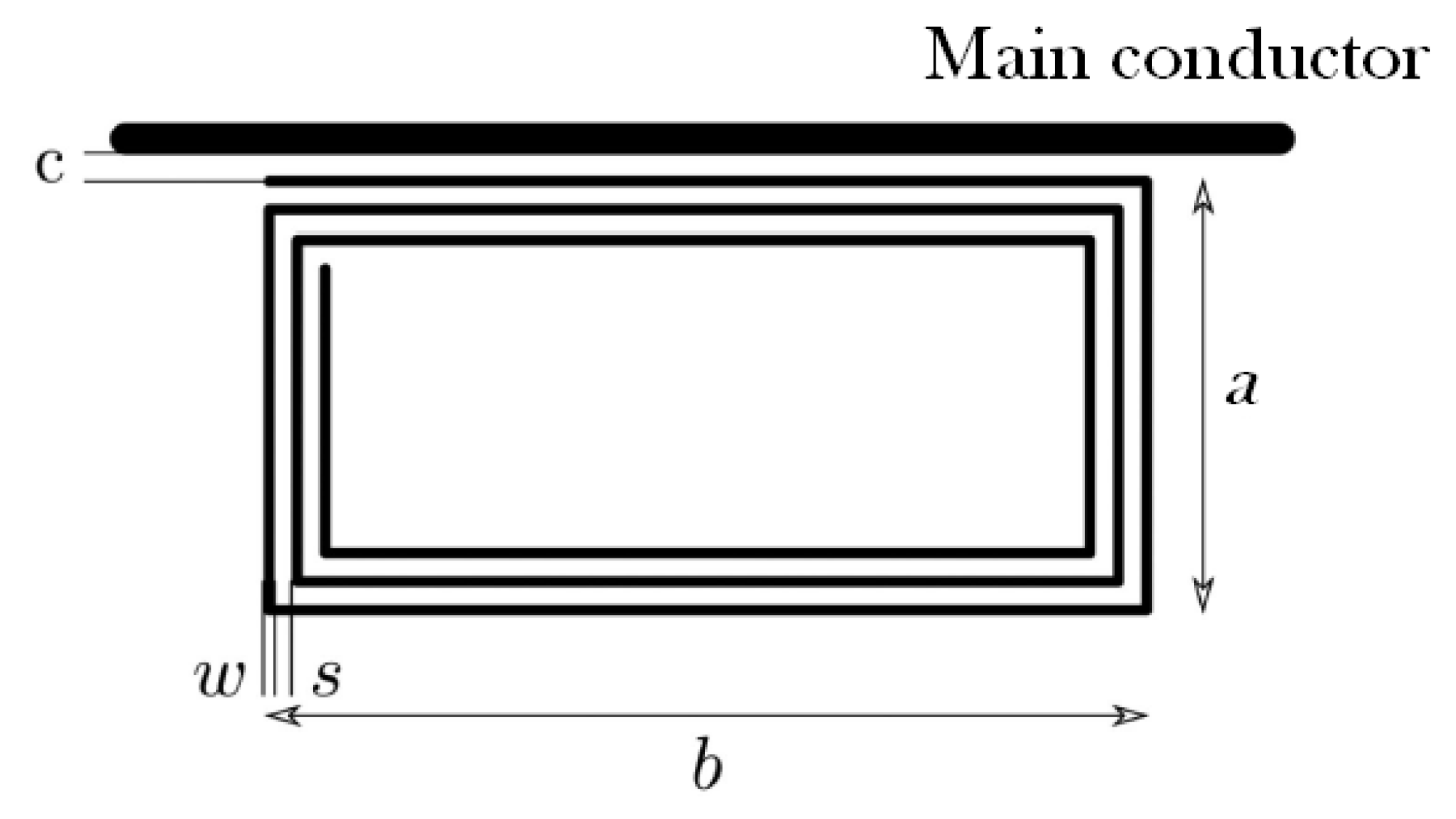

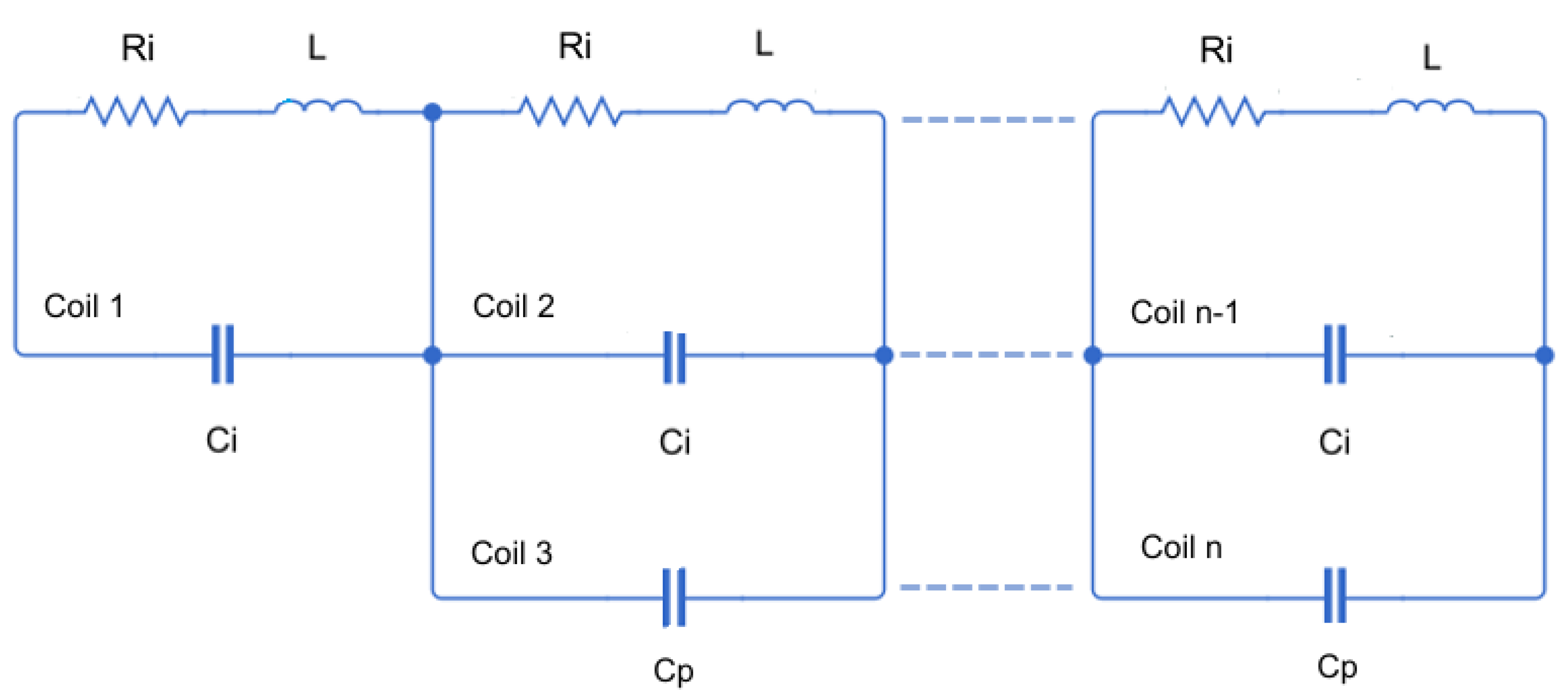



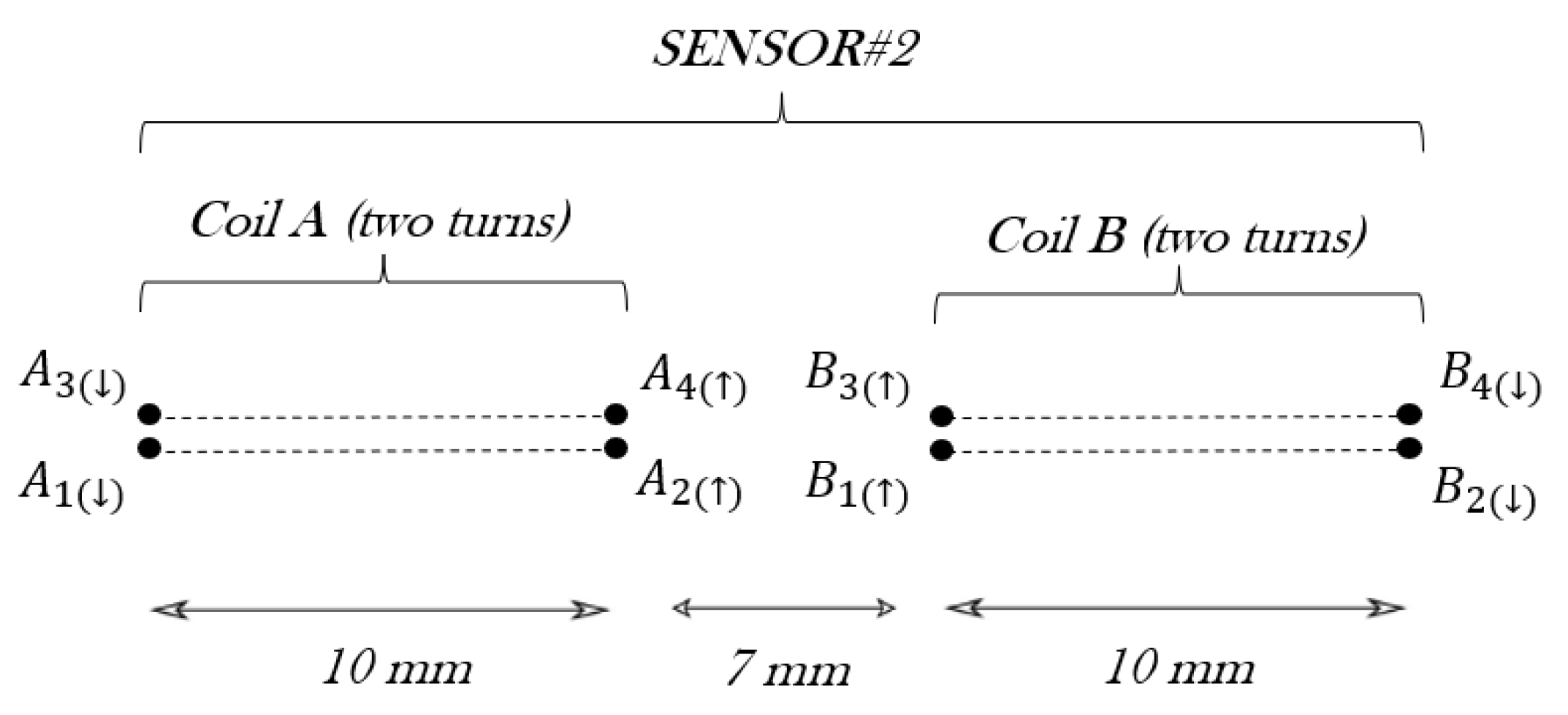

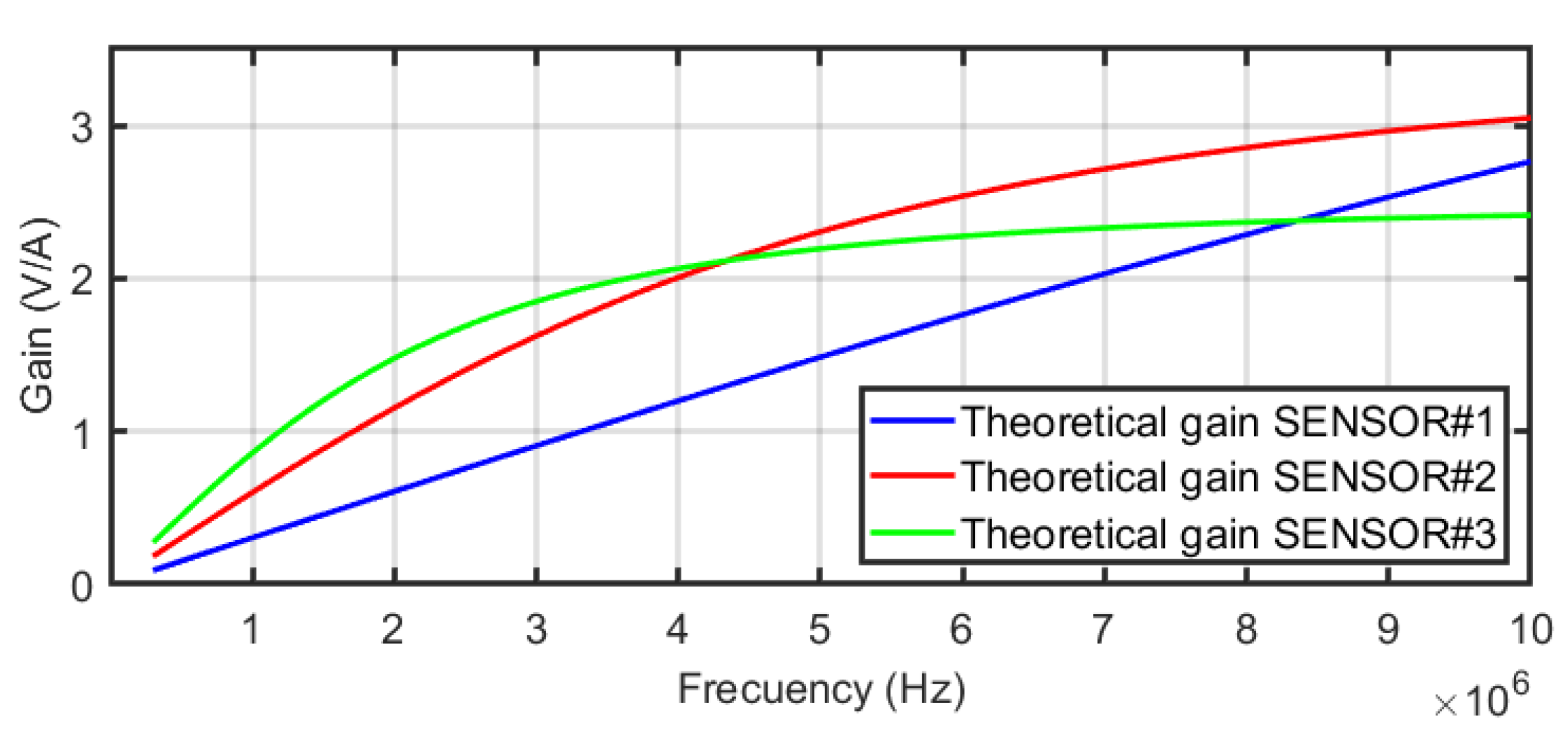

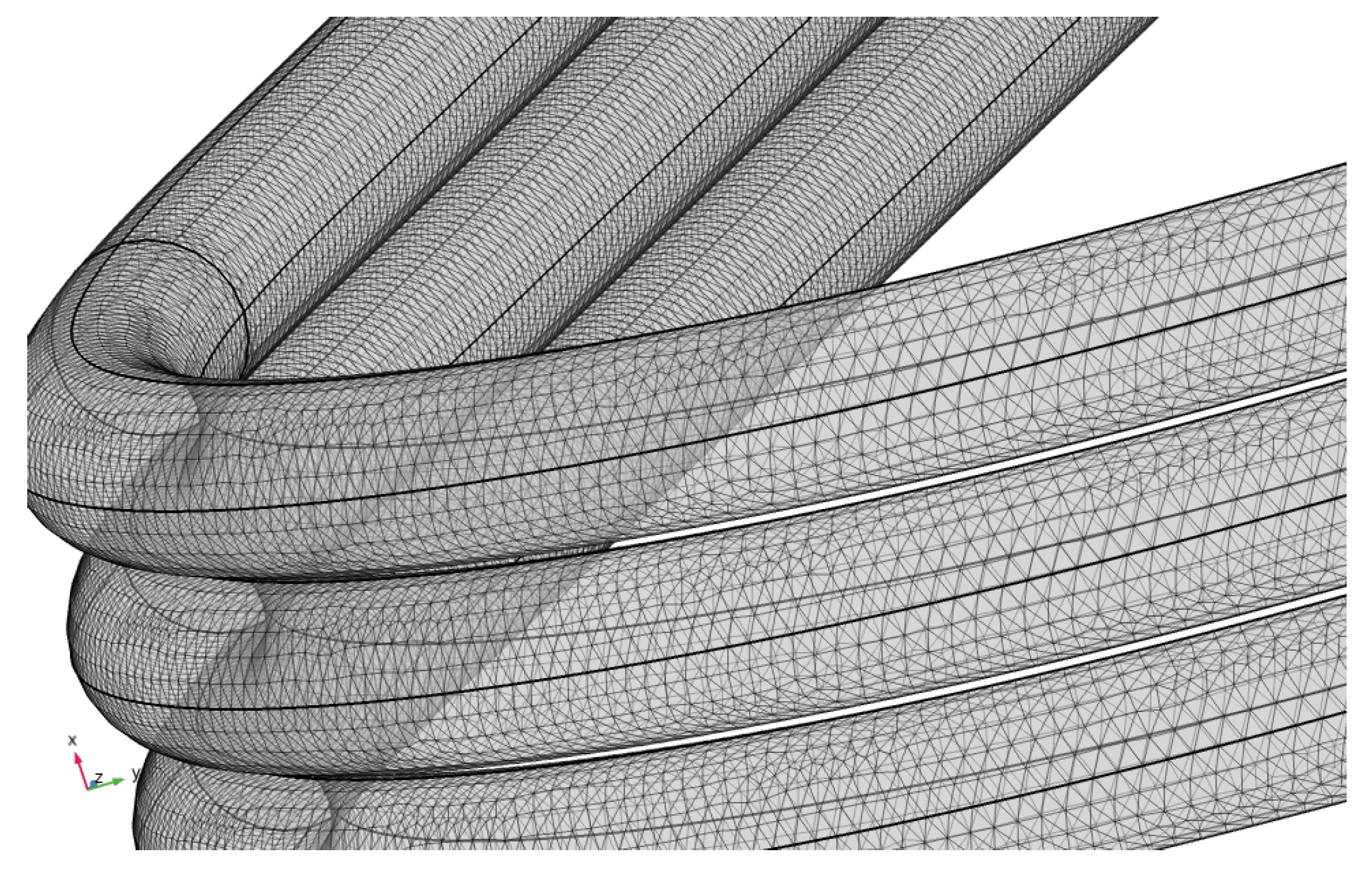



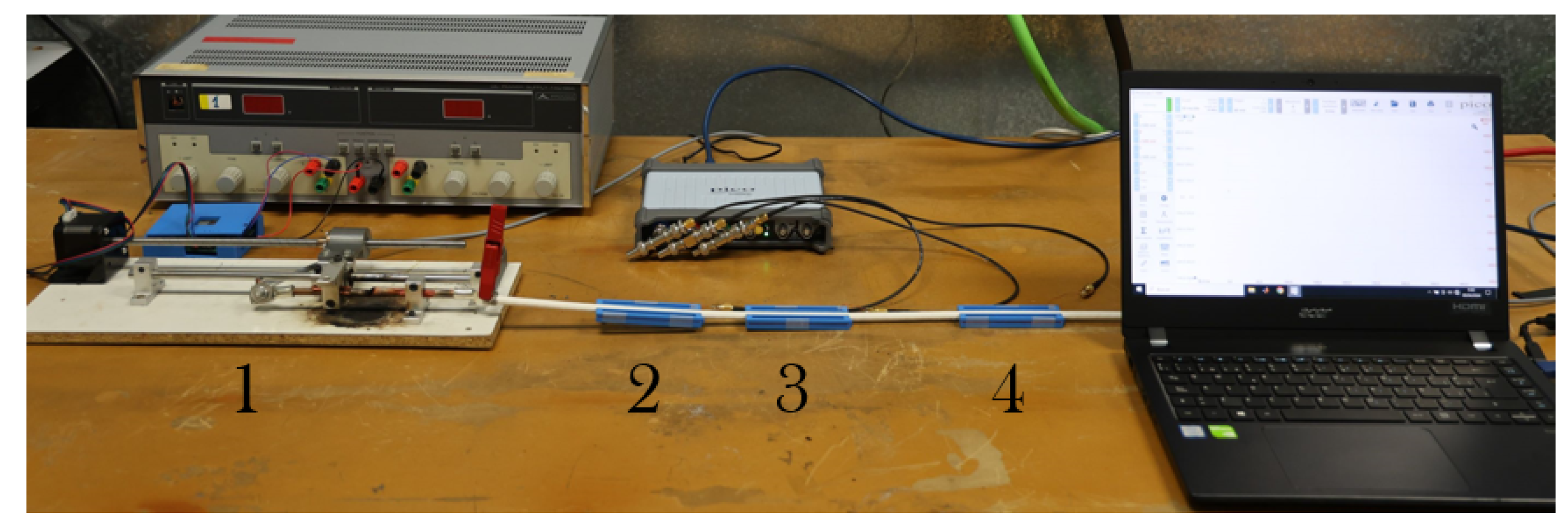
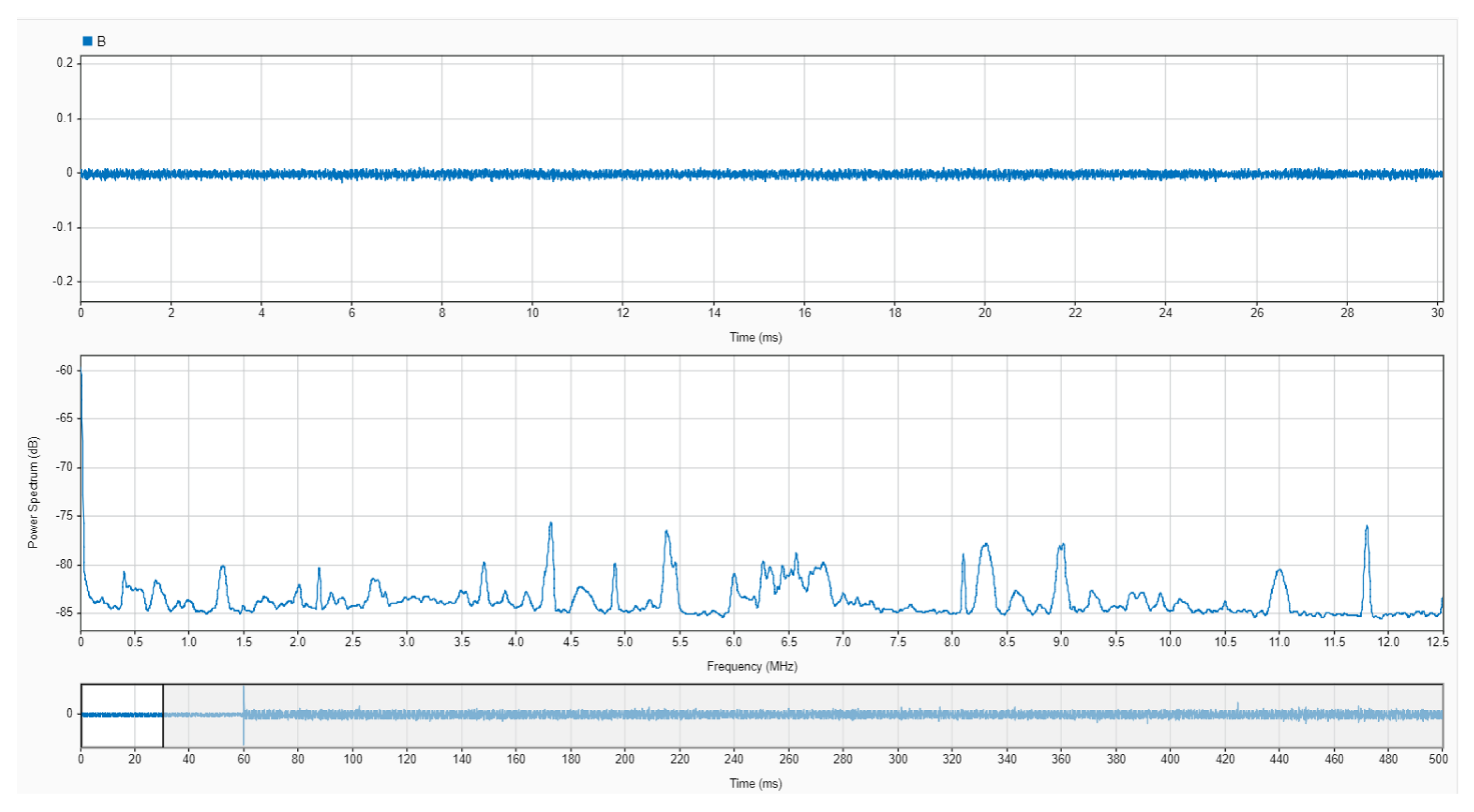
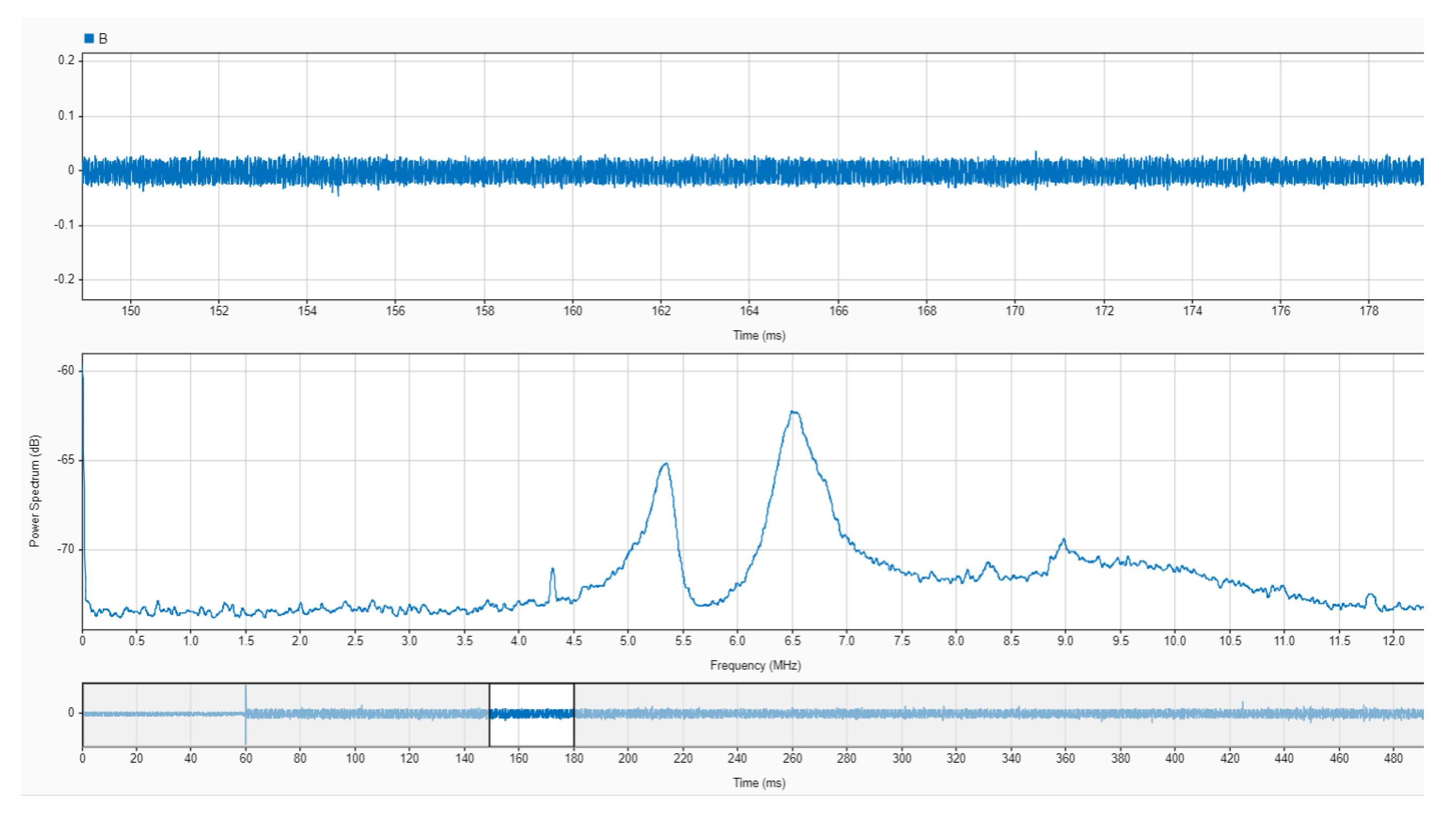
| Sensor#1 | Sensor#2 | Sensor#3 | |
|---|---|---|---|
| Theoretical M | nH | nH | nH |
| Sensor#1 | Sensor#2 | Sensor#3 | |
|---|---|---|---|
| FEM Modelled | nH | nH | nH |
| Theoretical | nH | nH | nH |
| Error |
| Sensor#1 | Sensor#2 | Sensor#3 | |
|---|---|---|---|
| Experimental–theoretical deviation (V/A) | |||
| Experimental–modelled deviation (V/A) |
| No-Arc | Arc | Ratio | |||
|---|---|---|---|---|---|
| dB | dB | dB | |||
| Sensor#1 | 5.0 | 53.2 | 10.2 | ||
| Sensor#2 | 2.9 | 53.4 | 12.7 | ||
| Sensor#3 | 4.2 | 66.5 | 12 | ||
Disclaimer/Publisher’s Note: The statements, opinions and data contained in all publications are solely those of the individual author(s) and contributor(s) and not of MDPI and/or the editor(s). MDPI and/or the editor(s) disclaim responsibility for any injury to people or property resulting from any ideas, methods, instructions or products referred to in the content. |
© 2024 by the authors. Licensee MDPI, Basel, Switzerland. This article is an open access article distributed under the terms and conditions of the Creative Commons Attribution (CC BY) license (https://creativecommons.org/licenses/by/4.0/).
Share and Cite
Barroso-de-María, G.; Robles, G.; Martínez-Tarifa, J.M.; Cuadrado, A. Modelling Inductive Sensors for Arc Fault Detection in Aviation. Sensors 2024, 24, 2639. https://doi.org/10.3390/s24082639
Barroso-de-María G, Robles G, Martínez-Tarifa JM, Cuadrado A. Modelling Inductive Sensors for Arc Fault Detection in Aviation. Sensors. 2024; 24(8):2639. https://doi.org/10.3390/s24082639
Chicago/Turabian StyleBarroso-de-María, Gabriel, Guillermo Robles, Juan Manuel Martínez-Tarifa, and Alexander Cuadrado. 2024. "Modelling Inductive Sensors for Arc Fault Detection in Aviation" Sensors 24, no. 8: 2639. https://doi.org/10.3390/s24082639






